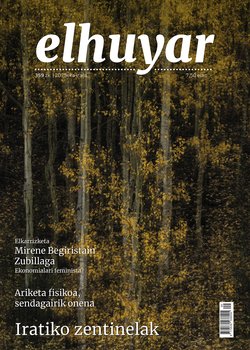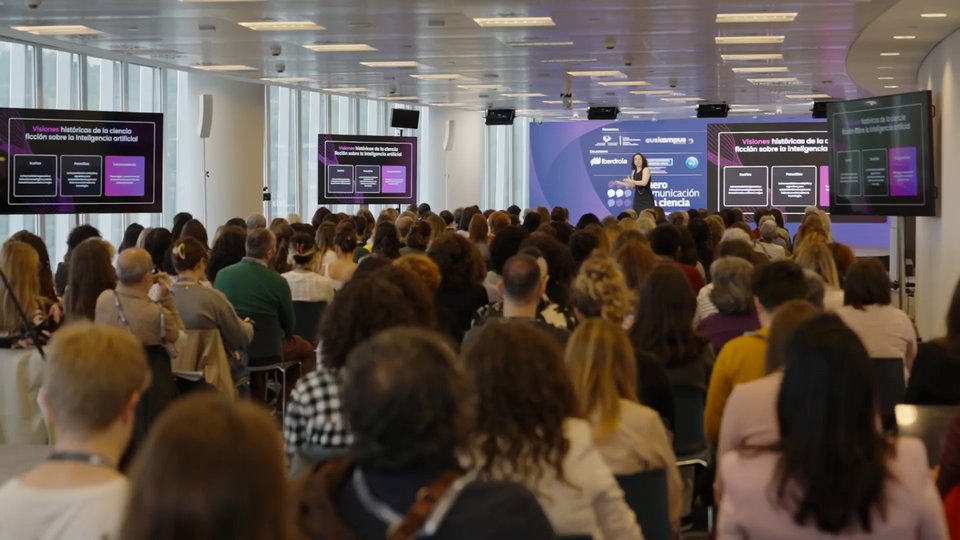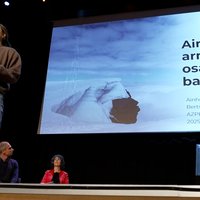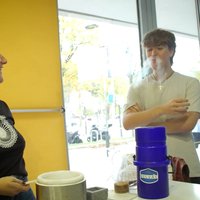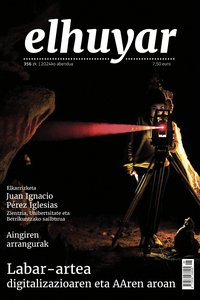The digital cattle rancher
IKER BILBAO; Mendinet: The objectives of the project have always been to improve the quality of life of the ranchers. Usually, they often have to go to the mountain to see where the animals are + The goal is to know where the animals are all the time, so that the farmers do not have to go to the mountain as often.
Jon’s 17 mare is found in the pastures of Aralar from May to October, and at least once a week he goes to the mountain to inspect the animals.
JON ZUBIZARRETA; Cattle rancher: Even if you are in the mountains, it is always convenient to come, go for a walk, and look more or less at the area, whether you walk in areas of your liking or have entered the hills, or if you simply have a disease or have suffered pain, or if you always have cattle you are always obliged to stay on top
You have to walk about two hours to get close to the animals. But the mares can move in an area of 150 hectares and the search for animals can take a long time, through the mountain. Today, luck is on Jon's side.
JON ZUBIZARRETA; Cattle rancher: We'll put the GPS on it. In this case, it's a two-year-old Behoka, Izar. Because I like the glasses that adults each have their own necklace, to know all the time where they go in the group and how they do it, the young ones don’t wear necklaces and she is very sweet and we will take advantage of it to put it on.
One device is enough in this case, because the way they always go in the group, well, if you localize this, the others also, we have them all next to us there, one is usually enough for that.
The project has been developed by the Mendinet association for two years. He was assisted by the company Neiker, who helped him to demonstrate the operation of the system.
In this way they have created a bucket with a GPS antenna, a mobile phone and an embedded battery.
IKER BILBAO; Mendinet: This is the GPS antenna that makes the location of the animal through the GPS. This is in the upper part of the animal, then the signal comes here, to this small device, it processes the information, and then through mobile telephony - this is the antenna - it sends the information to the cervix where the web is located. And then the information is seen by the users of the website.
The satellite will know the exact location of the Star through the GPS antenna. As the stars will be surrounded by the rest of the mare’s heads, the entire herd will be controlled by the rancher thanks to the spoon. This information will be sent by mobile phone signal to the website twice a day, in the morning and at noon. The location of the animal in the spot can be seen by the user in an aerial photograph, represented by a dot.
The spoon also sends additional information such as the distance or speed traveled by the animals, as well as the amount of battery left in the spoon. In this way, the farmer will easily know when to make the battery change.
JON ZUBIZARRETA; Cattle rancher: At home you look at the computer and ask him for the route he has made in the last 3 days and you realize that, well, it depends and what the weather is, well, they go to different areas. If it is very hot, then to the high places, and if it is cold to the south. + And this type of data is curious.
The koilare developed by the Mendinet association has been based on another koilare developed for pigs by the University of Extremadura and the mobile phone company Orange.
IKER BILBAO; Mendinet: As we used the Orange website, we had to use the Orange cobertura, and everywhere that cobertura is not the best. Then it would be an improvement, if you use the system of the operator that you have in your territory.
There is something to improve in terms of battery life.
JON ZUBIZARRETA; Cattle rancher: In terms of battery, if they have it, in terms of hardness and they have to try to improve a little, why they initially told us that they would have autonomy of three months at a time, but we proved it, and it hardly lasted more than 15 days.
If it worked properly, the product would be sold for about 200 euros. Several breeders who have tried it in the places of Koilarea, Gorbea, Izki, Aizkorri and Aralar have already expressed their interest in buying it.
JON ZUBIZARRETA; Cattle rancher: Without a doubt, for those of us who are in the early days, if this worked well, it would be a surety.
Buletina
Bidali zure helbide elektronikoa eta jaso asteroko buletina zure sarrera-ontzian


